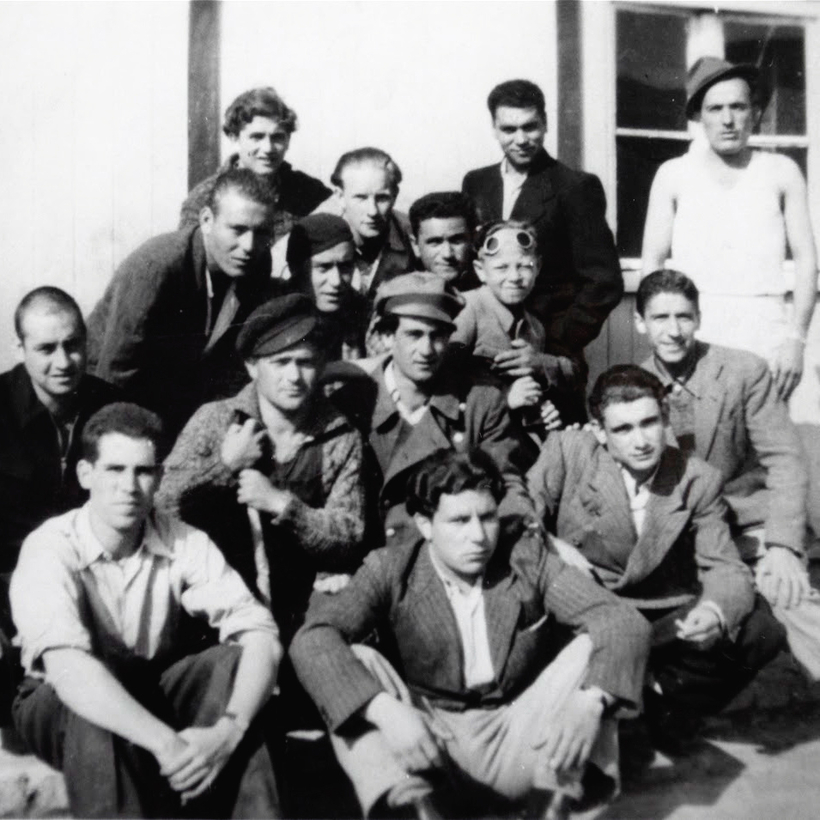In April 1943, when he was eight, Siegfried Meir and his parents were captured by the Nazis and deported from Frankfurt to Auschwitz. Both his mother and father would perish, but fate dealt Siegfried a different hand.
The boy had spent his earliest years living under the Third Reich but could never have imagined the horrors to come. “We reached Auschwitz-Birkenau and the men who stripped the prisoners’ clothes off said to my mother: ‘Hide the boy; if the Nazis see him they’ll take him away and kill him.’ I spent two months hiding in one of those bunk beds until my mother died from typhus,” Meir said. “The other prisoners said they could not keep hiding me and suggested I show up for the prisoner roll call. So I did.”
Aged nine he was removed from the women’s camp and placed in the men’s, where his father was beaten to death by the SS and where Siegfried, like his mother, caught typhus. Despite being thrown into Dr Mengele’s infirmary and given a mixture of shots, he recovered.
In January 1945, as Soviet troops approached Auschwitz, he was removed by the Nazis along with thousands of men and women and loaded on to a wagon bound for another camp: Mauthausen in Austria. Many prisoners died on the way of starvation and frostbite.
On arrival at the camp Meir was put in a bunkhouse with Spanish Republicans who had been exiled there after the Spanish Civil War. One of them was Saturnino Navazo. “He said: ‘Tell them you’re my son. If they ask you, say you live at No 49 Don Quijote Street, in Cuatro Caminos, Madrid.’ ” It was the start of an extraordinary relationship. “He looked at me, I looked at him. It was the first time I saw a kind smile. The Nazis warned Saturnino that, from now on, I would be his responsibility. He told me to always stay by his side and I followed him like a puppy,” Meir recalled.
Despite being thrown into Dr Mengele’s infirmary and given a mixture of shots, he recovered.
Before the civil war Navazo had been a semi-professional footballer, playing for Deportivo Nacional, a renowned club in Madrid. Boldly, he and a group of the Spanish prisoners created a football out of rags which they passed among them in the camp courtyard. The punishment for much less was immediate execution. “The Nazis oversaw everything above the wall, from the viewpoints. And one had seen them playing from the other side. So he called Navazo and said, ‘I see you’re very good. You can organise games here.’ ”

The weekly match, which Meir watched from the sidelines, provided cruel entertainment for the guards but for those who could muster the strength to play, it offered an escape from death. The guards gave them preferential treatment so that their source of “fun” continued. Navazo was given assistant work in the kitchen to peel potatoes; football allowed him to stop carrying heavy stones in the quarry, labour that had killed many other prisoners. As Meir put it, “Football freed them from certain death.”
On May 5, 1945, the day after Meir’s 11th birthday, the US army liberated Mauthausen. He headed to France with Navazo, who adopted him, but adapting to his freedom was not so easy. The camps had been his schooling and he had grown accustomed to stealing to survive. It took stern warnings from Navazo to make him see sense. From then on he dabbled with a variety of professions, learning to be a tailor in Toulouse before moving to Paris, where he sang in clubs under the stage name Jean Siegfried. He tried acting but had no luck — “movie directors said I looked sad” — and eventually he settled in Ibiza, where he ran a nightclub, restaurant and boutique store.
“In Auschwitz I had only learnt to steal. Navazo made me a good person. I always wanted to show him that I appreciated how much he had done for me. That man was a father to me,” Meir said.
Born in 1934 in Frankfurt to a Jewish Romanian family, he was the son of Max and Jenni Meir (née Bacharach). His childhood was defined by the Nazis’ antisemitic laws. “As my parents were very religious, my father always told me not to worry, that God would protect us. When we got to Auschwitz and saw everything that was happening there, I said, where is God?”
After Navazo’s death in 1986, aged 80, Meir fell into depression, but with the encouragement of a friend began to open up about his experiences. He wrote a book, Mi Resiliencia (My Resilience), and gave talks at events and in schools, determined to speak of the horrors of the Nazi genocide, as much as he wanted to forget them.
In 2015 his story was made into a documentary, Después de la Niebla (After the Mist), by the film director and producer Luis Ortas, who said Meir taught him “the meaning of resilience”.
After the liberation of the camps Meir, who is survived by his wife, Pilar Molina, refused to speak German again. He would never understand how man could behave so barbarically. “I was just a boy who lived quietly in his house, they took him out of it and took him to a field, where they killed his parents and they wanted to kill him.”
Siegfried Meir, Holocaust survivor and educator, was born on May 4, 1934. He died after a long illness on March 7, 2020, aged 85

